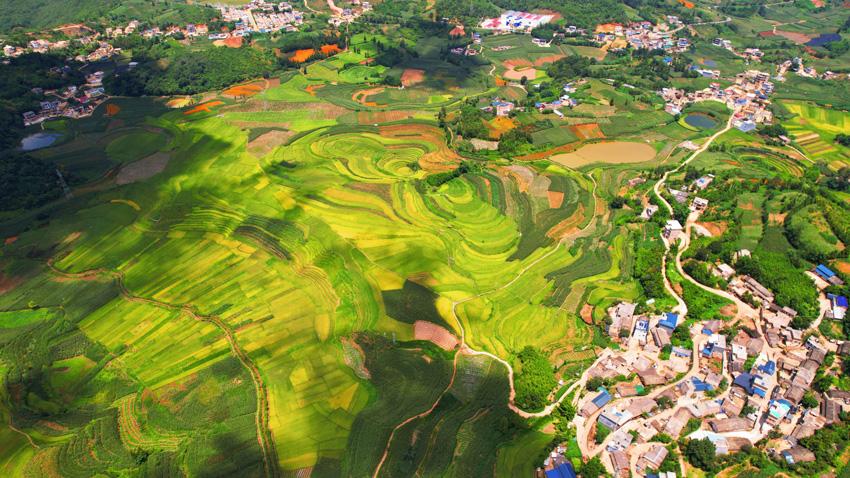National park in E China enhances biodiversity protection

Photo shows a view of the Qianjiangyuan National Park in Kaihua county, Quzhou city, east China's Zhejiang Province. (Photo courtesy of the management bureau of Qianjiangyuan National Park)
At Qianjiangyuan National Park, technician Jiang Yongqing carefully collected fallen seeds using a magnifying glass and tweezers. By analyzing the contents of withered leaves, including small tree branches, flowers, and fruits, researchers can gather data to support the scientific protection of the forest.
Jiang is a member of the Zhejiang Qianjiangyuan Forest Biodiversity National Observation and Research Station. The station employs four technicians, including Jiang, who are responsible for collecting samples in the wild, recording data, and monitoring changes in data on vegetation throughout its life cycle.
Qianjiangyuan National Park, situated in Kaihua county, Quzhou city, east China's Zhejiang Province, covers an area of about 252 square kilometers. It consists of three protected areas and the ecological areas that connect them.
The park is situated in a mountainous region with lush forests and diverse wildlife, earning the nickname the "natural water tower" of the Yangtze River Delta. Its exceptional ecological significance is highlighted by the pristine and distinctive ecosystem, conserving a vast expanse of untouched subtropical low-altitude evergreen broad-leaved forest vegetation in its purest form.
According to the latest research data, Qianjiangyuan is home to 2,234 species of higher plants, 449 species of large fungi, and 2,427 species of animals. It is a globally concentrated distribution area for the black muntjac and the Elliot's pheasant, two endangered species endemic in China that are under first-class state protection.
According to Yu Jianping, a senior engineer at the management bureau of the Qianjiangyuan National Park, the park has established a comprehensive biodiversity monitoring system, an unmanned drone inspection system, and installed infrared cameras. Qianjiangyuan is divided into 267 grids, each measuring 1km×1km. In each grid, two to three infrared cameras are set up to monitor wildlife.
Kaihua county has taken significant steps to protect biodiversity by establishing an environment and resources mobile court, an ecology, environment and resources case center, an ecological police center and a joint operations workstation.
Through a comprehensive approach that includes integrated restoration of mountains, waters, forests, fields, lakes, and grasslands, and the rescue and protection of rare and endangered species, Kaihua county is continuously restoring its ecological resources, preserving the habitats for wildlife.
In 2022, the park launched an ecological smart governance system, utilizing digital technology to enhance ecological protection. This system includes eight perception systems, such as drone-based disaster prevention inspections and wildlife identification, as well as 25 sub-scenes.
Together, they create a comprehensive monitoring and early warning system covering sky, space, land, and human activities. This system allows for continuous monitoring of the entire park, key ecological systems, and critical species, providing strong support for scientific research.
Photos
Related Stories
- China releases catalog of 105 tropical crop germplasm banks
- China mulls national park law to better protect biodiversity
- China, France establish international biodiversity research network
- Scientists seek to safeguard biodiversity in SW China
- China sets Kunming Biodiversity Fund to support biodiversity conservation in developing countries
- Rare golden hair monkeys thrive in China's alpine nature reserve
Copyright © 2024 People's Daily Online. All Rights Reserved.









